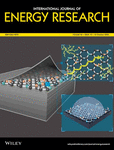Stochastic profit-based unit commitment problem considering renewable energy sources with battery storage systems and plug-in hybrid electric vehicles
Funding information: Council of Scientific and Industrial Research (CSIR), New Delhi, India, Grant/Award Number: 22(0815)/19/EMR-II
Summary
The paper presents a novel methodology based on a BARON solver in general algebraic modeling system (GAMS) computational environment to solve the stochastic profit-based unit commitment (SPBUC) problem in the deregulated energy market. The profit is considered as the difference between the total revenue collected by selling energy in the competitive energy market and the production cost of energy. The concepts of the deregulated energy market like market clearing price and market reserve price are employed for the determination of the expected revenue. Energy storage systems and electric vehicles have the benefit to act as load as well as generating sources during the uncertain and intermittent nature of renewable energy sources (RES). Thus, the RES in combination with battery energy storage systems and plug-in hybrid electric vehicles (PHEVs) are modelled and included in the present study. The Monte Carlo Simulation technique is employed to deal with the uncertain nature of wind speed, solar irradiance and PHEVs. First, the proposed solution methodology is tested on a 10-unit thermal system with and without valve point loading wherein it has provided an enhanced profit of 1.28% when compared with existing results reported in published literature. Secondly, the comparative results obtained by solving the SPBUC problem integrated with RES with different solvers available in GAMS computational environment demonstrate that the BARON solver outperformed the other solvers in terms of computation time and expected profit attained.
CONFLICT OF INTEREST
The authors state that they have no conflict of interest approved by their supervisor (Dr. Ram Naresh) and co-author (Dr. Veena Sharma).




